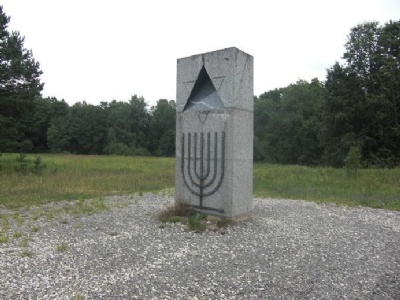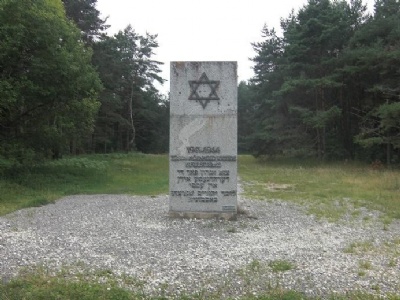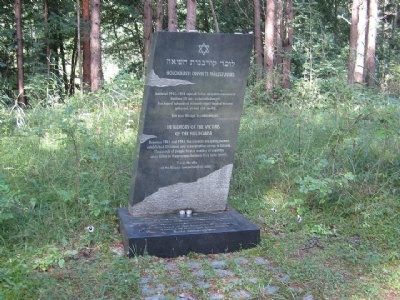Klooga
In a small village called Klooga (german Lodensee) about thirty kilometres west of Tallinn, the Nazis set up a satellite camp subordinated to Vaivara in September 1943. The camp was divided in a male and a female part about 500 meters apart. The prisoners were forced to work at a nearby brickworks. Between 2000 – 3000 prisoners were Jewish men and women from the liquidated ghetto in Vilnius. In addition to Jews, there were also hundreds of Soviet prisoners of war in the camp. Klooga became the largest camp in Estonia. A small resistance movement was formed in the camp, but due to regular prisoner transports to and from the camp, it never had the opportunity to grow strong. Their main task was to collect weapons and try to make contact with partisans who were in the surroundings of the camp.
But it was too weak to be able to organize any mass escape from the camp. The escape attempts that were made were usually individual and spontaneous. In the summer of 1944, the prisoners began to be evacuated to Stutthof in Poland. On September 19, when the German front broke down, the Nazis began murdering the camp’s prisoners. About 2,400 were murdered, no more than 100 managed to escape or hide. When the Red Army arrived at the camp on September 28, piles of corpses were found piled up between lumber ready to be cremated. But the Nazis were in a such hurry that they never got time to set piles of corpses on fire before the Red army arrived. This was a gruesome view the Red army soldiers meet when then arrived at the camp.
Current status: Demolished with monument (2011).
Location: 59°19' 46.45" N 24°13' 05.83" E
Get there: Car.
Follow up in books: Arad, Yitzhak: Holocaust in the Soviet union (2009).




There are three monuments within just 200 metres. The first was erected in the sixties on the site of the executions in September 1944. The monument is a bit decayed and the communist star that used to be on the top of the monument has been removed (vandalized?). On the original text it was written just as on other monuments in the former Soviet Union that it was soviet citizens who were murdered. That the majority of the victims were jews were not mentioned. After the fall of communism, this has been revised. The second monument was established in the mid-nineties while the third and last one was established in 2006. Klooga was not the first camp to be liberated or the first to be known to the outside world, but Klooga was the first camp where international press was admitted. The images taken of stacked corpses spread across the world and are some of the most macabre published from any of the Nazi concentration camps.